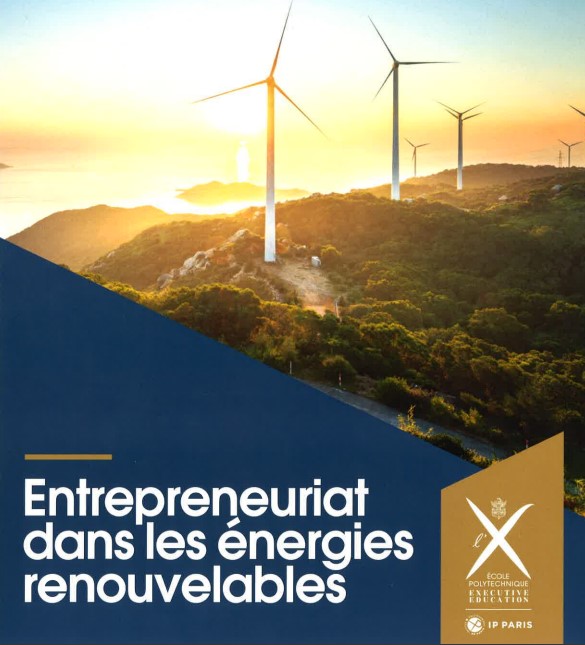 |
Frédéric OSWALDNanosciences et Innovation pour les Matériaux, la Biomédecine et l'Énergie Laboratoire Innovation, Chimie des Surfaces Et Nanosciences |
CV
- Janvier 2023 :, Habilitation à diriger les recherches de l'Université de Paris Saclay :
"Matériaux pour la transition énergétique: synthèse, mise en forme et stabilité"
- Depuis septembre 2021 : Expert senior CEA en photovoltaïque
- Depuis 02/2019 : Ingénieur Chercheur CEA, CEA Saclay
Unité : DRF/IRAMIS/NIMBE – UMR3685 - Laboratoire d'Innovation en Chimie des Surfaces et Nanosciences (LICSEN)
- 01/2011 – 01/2019 : Responsable recherche et développement, Solaronix SA, Aubonne (Suisse)
Responsable de la recherche dans le domaine du photovoltaïque 3ème génération
- 06/2009 – 12/2010 : Ingénieur de recherche, Solaronix SA, Aubonne (Suisse)
- 06/2009 – 12/2010 : Chercheur Post-doctorant à l’Ecole Nationale Supérieure de Chimie de Montpellier ENSCM (France)
"Elaboration of porous semi-conducting organic networks by the molecular tectonic".
- 01/2007-07/2008 : Chercheur Post-doctorant au CEA-Grenoble/LETI-MINATEC (France)
"Nanofils Organiques Semi-Conducteurs Auto-Assemblés: Jonctions et connectiques pour l’électronique (supra)-moléculaire".
- 2005-2006 : Chercheur au Laboratoire de Chimie Organique du professeur F. LANGA de l’Université de Castilla la Mancha, Tolède (Espagne)
"Systèmes donneur-accepteur avec organisation supramoléculaire, basés sur des fullerènes: design, synthèse et étude de leurs propriétés"
- 2003-2005 : Chercheur post-doctorant au Laboratoire de Chimie Organique du professeur F. LANGA de l’Université de Castilla la Mancha, Tolède (Espagne)
"Synthèse et propriétés électrochimiques de nouveaux systèmes donneurs pyrazolinofullerène"
- 1998-2002 : Doctorat ès Sciences, Spécialité Chimie Organique de l’Université de Neuchâtel (Suisse),
Laboratoire de Chimie Macromoléculaire du Professeur R. DESCHENAUX.
"Polymères et Dendrimères Mésomorphes du Fullerène: Synthèse et Propriétés" - http://doc.rero.ch/record/2592?ln=fr
Sujets de recherche
Title : Materials for energetic transition : synthesis, processing and stability.
Keywords : Photovoltaic, photocatalysis, material processing, perovskite solar cells, stability
Abstract : Today, more than 75% of the world energy demand is met by traditional, non-sustainable energy resources, mainly based on coal, natural gas and oil. The accelerated world population growth and post-industrial era bring to attention an unprecedented energy demand, responsible for environment problems, sustainable development concerns as well as economic challenges.
Technologies that take advantage of renewable energy sources such as sun, wind, biomass, hydraulic and geothermal are being studied and developed. Sunlight has an enormous potential as energy source, which can be transformed in electricity and heat with minimal environmental impact.
Photovoltaics represents a concrete action to mitigate fossil fuel consumption, and among all the developed solar cells, Perovskite solar cells (PSC) have recently emerged as a strong contender for the next generation of photovoltaic technologies, having received the attention of the photovoltaic community, both scientists and industry. PSC have shown an incredible increase in terms of efficiency in few years and perovskites can be used in various applications such as light-emitting devices, photodetectors or memristors. A broad range of architectures and fabrication methods have been proposed, as well as several perovskite compositions and charge selective layers, suggesting that the performance of these devices is still far from being fully optimized. Moreover, PSCs are sensitive to high temperatures, UV-light, moisture and oxygen: factors that limit their stability and are hindering their commercialization.
Title : Stability of efficient triple-mesoscopic perovskite solar cells and modules under real outdoor working conditions.
Keywords : Photovoltaic, perovskite solar cells, stability
Abstract : To successfully enter the photovoltaic market, perovskite solar cells are still facing several tough challenges. Scalability of the processes and stability of the devices need to be ensured. The latter especially has been one of the main causes of skepticism for a long time and is still underestimated in most studies. Perovskites solar cells are still generally considered as having poor long-term stability. The main degradation factors arise from their compositional instability, ion migration, and halide/metal reactivity, as well as moisture, oxygen and UV light sensitivity.
The best performing devices all use gold or silver as the back contact in conjunction with hole-transporting materials (HTMs) acting as electron-blocking layers. The use of such noble metals, limits PSC large-scale application. Gold and silver are expensive and their deposition requires high energy-consuming vacuum evaporation methods. Furthermore, due to halogen ion migration, back electrodes are prone to degradation with formation of silver and gold halides.
Carbon-based materials like graphite or amorphous carbon, graphene, and carbon nanotubes represent a suitable solution to substitute noble metals. With their potential of low cost, high conductivity, work function close to that of gold and, in some cases, low-temperature processing, they are considered as an interesting alternative in the field of PSC. Due to their highly hydrophobic nature carbon-based materials can improve PSC stability by preventing moisture penetration in the perovskite layer.
A recently published consensus on procedures for studying the stability of perovskite solar cells, based on the International Summit on Organic Photovoltaic Stability (ISOS) protocols, describes measurements and aging procedures that are a good indicator of long-term stability and are valid for established technologies such as silicon. However, they do not perfectly reflect outdoor operational conditions with day-night cycles, fast changing irradiance, temperature or rain. Due to the unique ion migration characteristic of PSC, such changing conditions might affect device output and long-term stability. Changes in electric field intensity during day-night cycles cause regular ion redistribution, that might be reversible, but combined with temperature changes might, in the long-term, create new recombination centers in the bulk or at interfaces.
Outdoor operational conditions are rarely considered and only few reports can be found. All reports show that, as testing time increase, devices suffer both reversible and more importantly irreversible degradations, which potentially are not detected in a constant temperature, constant one-sun irradiance Maximum Power Point (MPP) tracking procedure, confirming the necessity for outdoor testing under real operational conditions.
In order to study PSC under real operational conditions, I recently initiated a collaboration with the SIRTA. The Atmospheric Research Observatory (https://sirta.ipsl.fr/) is one of few sites in Europe offering the instrumentation and the facilities to study atmospheric physico-chemical processes from the earth surface to the upper troposphere.
Title : Solar hydrogen production using tandem perovskite devices
Keywords : photocatalysis, solar fuel, perovskite solar cells, stability
Abstract : Today’s development of the hydrogen fuel automotive industry is strongly limited by the lack of processes and technologies able to provide sufficient amounts of hydrogen at acceptable costs without polluting the environment or increasing the CO2 footprint. A very promising solution has been found in the use of solar energy, in combination with photovoltaic devices, to perform water splitting to produce hydrogen in an ecological manner. While the use of expensive catalysts and multi-junction solar cells has shown potential for high performance and a good solar to hydrogen (STH) conversion efficiency, the cost of such produced hydrogen stays prohibitive. In an effort to reduce costs, the group of D.G. Nocera has demonstrated the potential to use inexpensive silicon based triple junction devices showing an efficiency of 4.7%. While the cost of this solution is very low, the performance was limited due to the use of thin film triple junction devices, requiring splitting the current density in thirds in order to achieve proper current matching in each junction connected in series.
The development of high performance triple and quadruple junction solar cells made of amorphous (a-Si:H) and microcrystalline silicon (μc-Si:H) for the application as photocathodes in integrated photovoltaic–electrosynthetic devices for solar water splitting has been reported. Unfortunately, this solution is complex and costly.
I propose to increase the performance by adding a high bandgap perovskite solar cell to the single junction Si based solar cell to achieve a sufficient potential difference with only two junctions. This could drastically increase the current density flowing through the device and thus the STH efficiency of such a combined device.
The perovskite solar cells have been studied in the past years due to their high performance characteristics allowing high Voc, while also matching very well tandem requirements of crystalline Si solar cells, which is why many prominent studies focus on the development of perovskite-crystalline silicon tandem devices. While the performance characteristics of perovskite devices are very well suited for water splitting, their extreme sensitivity to water makes them very difficult to use, directly, as photoelectrodes.
The main goal here is to demonstrate a complete photoelectrochemical cell (PEC) performing an efficient conversion of solar energy to hydrogen fuel by photocatalytic water splitting.
Publications scientifiques (sélection)
- Photochromic dye-sensitized solar cells with light-driven adjustable optical transmission and power conversion efficiency
Nature Energy 5 (6), 468-477 - One-Year stable perovskite solar cells by 2D/3D interface engineering
Nature Communications 8, 2017 - Side chain engineering of organic sensitizers for dye-sensitized solar cells: a strategy to improve performances and stability
Journal of Materials Chemistry A 5(13), 6122-6130, 2017 - Metal-free organic sensitizers with narrow absorption in the visible for solar cells exceeding 10% efficiency
Energy & Environmental Science 8 (7), 2010-2018, 2015 - A robust organic dye for dye-sensitized solar cells based on iodine/iodide electrolytes combining high efficiency and outstanding stability
Scientific reports 4 (2014) - A comprehensive comparison of dye-sensitized NiO photocathodes for solar energy conversion
Physical Chemistry Chemical Physics 18 (16), 10727-10738
Enseignement
|
|
Enseignant dans le Master entrepreneuriat dans les énergies renouvelables à l'Ecole Polytechnique - Executive Education. |












